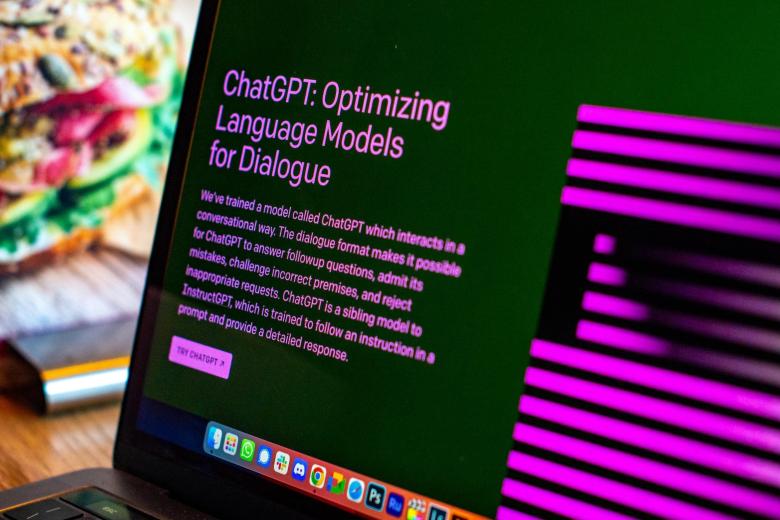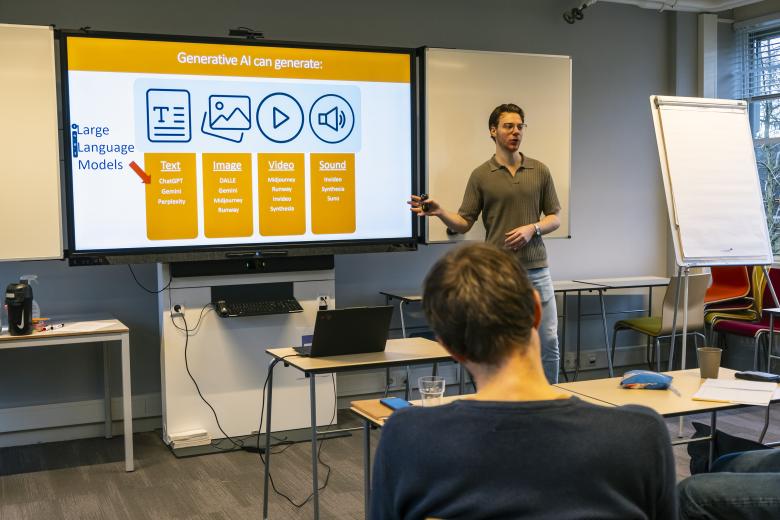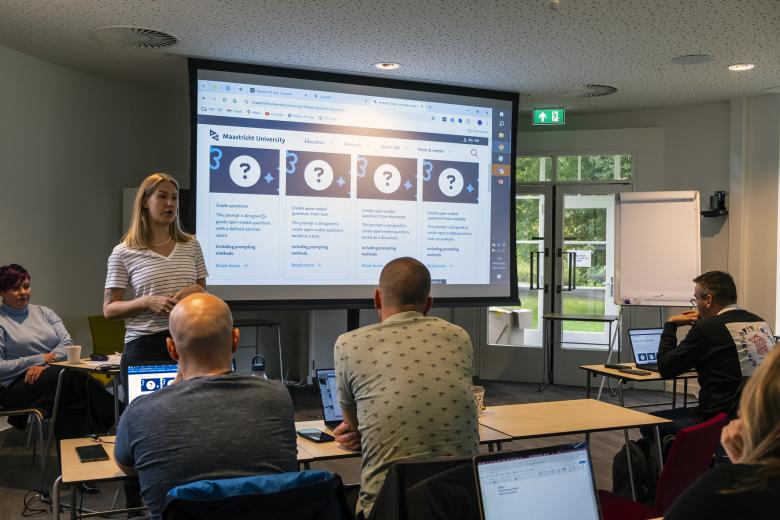Is the hype around ChatGPT due to ingenious marketing or the disruptive power of AI on all our lives?
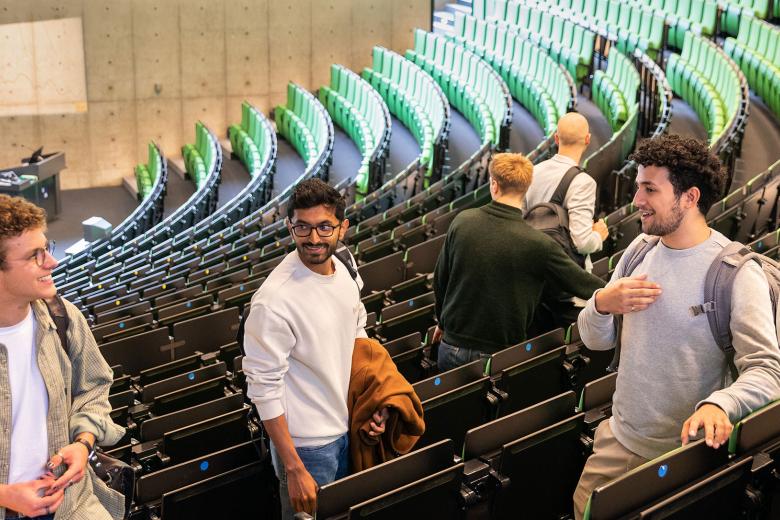
Artificial intelligence
Artificial intelligence is any artificial creation of human-like intelligence programmed to perform equally or better than humans on specific tasks. Popular AI applications today include speech recognition, translation, text generation, computer vision, and recommender engines.
Nowadays, in a non-technical context, when we talk about AI, we are generally referring to Deep Learning applications due to the popularity and attention that DL has received in the last couple of years. However, it is important to remember that DL is only one of many AI methods and techniques.
Machine Learning
Classical Machine Learning (ML) is a sub-field of Artificial Intelligence that allows computers to learn structures and patterns in the data without explicit instructions. Machine Learning always starts with training data such as text and images fed to an algorithm for training. The algorithm is programmed to fit the data as best as it can, and in so doing, it identifies (“learns”) patterns in the data, which it will then use to categorise and label new data. The quality of predictions of an ML model depends, among others, on the quality and quantity of the data it had at its disposal during training.
Deep Learning
Deep Machine Learning is a subset of Machine Learning that uses neural networks, a popular family of models, to describe the data. It is called “deep” because it uses deep networks, i.e., made of many nodes and layers. This complexity helps Deep Learning (DL) algorithms make very accurate predictions that rely less on human input than other machine learning approaches. This accuracy comes at a cost: Deep Learning models require a lot of data and energy to learn effectively. Moreover, it is crucial for the data fed to the algorithm to be of high quality, representative of the domain, and free of biases and discriminatory elements to avoid these biases being embedded in the model’s predictions.
While the concept of deep learning has been around for several decades, it was only since the mid-2010s that it became the dominant approach in AI, thanks to advancements in computing power and the availability of large datasets. Typical applications that rely on DL algorithms are image recognition (e.g., Google Lens), translation apps, automatic dictation, text generation (e.g., ChatGPT), and self-driving cars.
Large Language Models (LLMs)
Large Language models (LLMs)are deep learning algorithms that deal with textual data. Depending on the application and model, they can generate, recognise, modify, summarise, translate text, and more. Some popular applications of LLMs include:
- Chatbots and AI assistants
- Search engines’ summarised answers at the top of search results
- Text autocompletion (e.g., for emails)
- Text classification (e.g., spam detection)
- Support in writing any text, software, and code
- Translation engines
LLMs are probabilistic, meaning they create a probability map of words and sequences of words based on large bodies of training data harvested from web pages, e-books, e-journals, etc. In the case of generative models such as ChatGPT, the word choice is based on conditional probability. The model generates the word most likely to follow previous sentences and paragraphs.
Learning Analytics
Learning analytics is the measurement, collection, and analysis of learning-related data to understand and improve the learning and educational process in a given domain. Examples of learning analytics include monitoring students’ activity on online learning platforms, providing personalised assignments and tasks based on test results, monitoring progress and giving personalised feedback, and using collected data to improve course curriculum.
Learning Analytics at Maastricht University: lessons learned
A project at Maastricht University concerning Learning Analytics generated the following lessons:
- LAs may help to provide student equity yet increase the risk of privacy infringements
- LAs seem to be particularly useful for courses with large (and rising) numbers of students
- LAs can foster incremental (and non-disruptive) quality change
- LAs avoid GDPR infringements with opt-in and opt-out declarations
- LAs combine learner development information based on Learning Analytics with suitable interventions, e.g., interpretation of the data, skills education or reflection with, e.g., peers, study advisors or mentors
- LAs allow for transparency, e.g., open data and algorithms
Mindful use of data & adverse effects on learning
Impact on self-directed learning
The use of Learning Analytics can reduce the level of autonomy of students. LA-based predictions may interfere with students’ goal-setting, reflection and evaluation practices making the overall learning process less effective. Moreover, the predicted analysis might hinder students’ ability to choose their own learning path. At the same time, Learning Analytics can help teaching staff to better support students. The insights gained into student learning development can lead to improvement or adaptation of the educational offer for student batches or individual students.
Students & data predictions
Individuals may deal differently with LA-powered suggestions and feedback (in terms of interpretation skills) and have different ways to incorporate it into future learning behaviour. It is even shown that predictions may turn into “self-fulfilling prophecies”, meaning that if a student receives an ‘at-risk’-warning, they lose confidence and tend to drop out more quickly. There are limits to profiling or labelling students, even though it may also be unethical not to inform students when they are at risk. In any case, close follow-up by mentors, study advisors, or academic counsellors is important.
Teachers & data predictions
On the teacher's side, one should be hesitant to seek causation and draw conclusions based on data showing learner activity, engagement and study success. Depending on the assessment practices at the institution, students may, for example, be able to pass with limited class attendance, interaction, and Learning Management System (LMS) activity. High activity and engagement can be traits of the learning behaviour of both weak and strong students, and possible interventions will most likely differ. It is difficult to distinguish with limited data, and oversimplification is dangerous and may reduce individual learning preferences and circumstances to a manageable database of generic metrics.
Data quality and use
It remains a challenge to gather clean data that can be linked to one individual. Especially within the collaborative learning environment of Maastricht University, students can work together on assignments or use the same Learning Management System account (Canvas at UM). With such potential database “pollution”, the question remains whether data regarding LMS activity can be informative. To make informed evaluations, it is good practice to base decisions on a wide variety of data from different sources.
Data protection
Infringements with the General Data Protection Regulation (GDPR) and general privacy issues with learning analytics tend to surface with insecure anonymisation of data, re-usage and exploitation of data in different internal or external contexts, storage, security and the combination of datasets. The latter can lead to other correlations and conclusions and should always be prevented. Data ownership is tricky because the students remain owners of their data, yet monitoring and managing all extracted data is practically impossible. The institution is hence the main "administrator" of the collected data and is responsible for adhering to the privacy concerns mentioned above. Important questions regarding learning analytics and confidentiality that should be answered before implementation are, for example: What are legitimate goals for an institution to collect learner data? How can collected data be made insightful and transparent to the student?
Key prerequisites for using Learning Analytics
- For the optimal use of Learning Analytics, learning activities should be deployed within the institute's Learning Management System (Canvas at UM) as much as possible. Given Maastricht University's on-campus PBL environment it can not be expected (yet) that all learning activities take place within Canvas or other digital learning systems. This makes it difficult to collect the high amount and variety of data needed to obtain statistically significant insights into the learning process.
- Another aspect for optimal use of Learning Analytics is a clear visualisation of the information, e.g. through a dashboard, to gain insight and give meaning to results based on Learning Analytics.
Legal considerations
When collecting, processing, and using data to make decisions, important legal pre-requisites for the use of Learning Analytics are:
- Openness
- Information
- Transparency
Moreover, we recommend to:
- Involve students (councils) in decisions to collect and make use of Learning Analytics
- Let any stakeholder know what data will be collected and for what purpose
- Ask students for informed consent for data extraction and use
- Clarify how long the learning data will be stored by the institution and respect student rights ‘to be forgotten’
- Offer students to opt out of data collection practices without being subjected to any negative (learning) consequences because of the opt-out
- Any stakeholder should be able to access and read the data collected by the institution.
References
- Sclater, N. (2017). Learning Analytics explained. Taylor & Francis.
- Society for Learning Analytics Research (SoLAR). (2021, March 24). What is Learning Analytics?
- Van den Bogaard, M., et al. (2016). Learning Analytics in het onderwijs: een onderwijskundig perspectief. SURF.
Sustainable Consumption: Fashion
Hosted by Universalis
Featuring Amy Nguyen (Ripple Research), Branko Popovic (Fashion Clash), Natalie (Dotnsquare)




Contact
For more information, please contact:
Walter Jansen, Senior Coordinator Innovation at EDLAB
Spoorti Ramesh, Student assistant at EDLAB
For specific questions about the AI policy framework, please contact:
Lars Nabuurs.
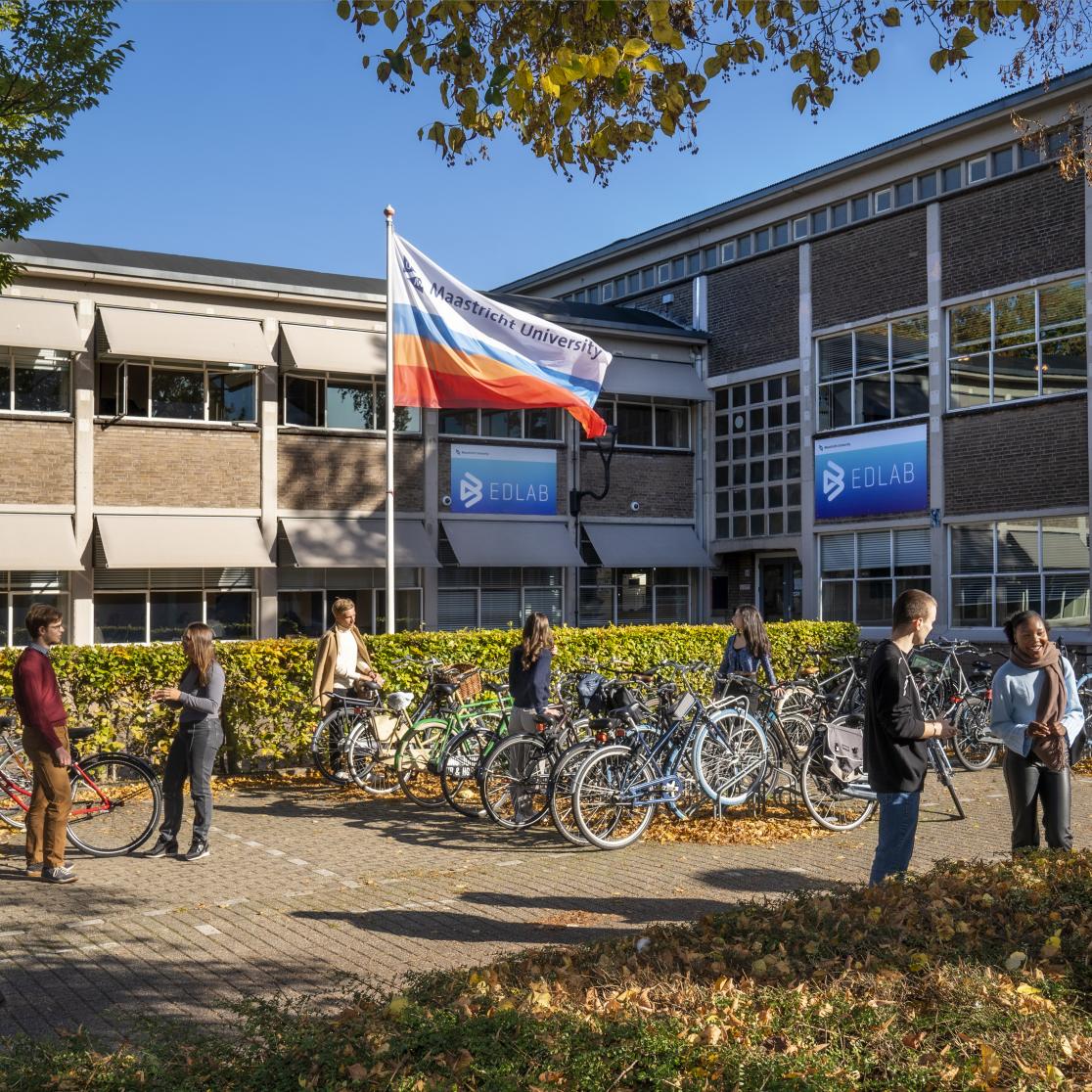
Disclaimer
The information on this page presents examples to UM students and staff on how to make better use of Generative AI (GenAI) in the educational process. Maastricht University does not recommend the use of any specific GenAI tool. However, you are strongly advised to opt-out of allowing your content to be used to (further) train the GenAI tool of your choice. This can usually be done in Settings.
Given that all information entered into an AI tool will be stored and can be reused by the GenAI tool provider as they deem fit, one should not feed: UM- data, confidential information and trade secrets; personal data and sensitive data relating to you or other people; copyrighted materials (such as books, academic articles e.t.c.), but also materials for which the UM is the copyright holder, such as educational materials including coursebooks, syllabi, ppt, e.t.c.
Certain GenAI practices in education may not be allowed or encouraged within your faculty’s policy framework and/or rules and regulations. Please check first any relevant rules on the use of GenAI in education, applicable to you, and defined at activity, course/module, study programme and faculty level.
GenAI can only be employed for high-risk practices under strict conditions set out in the EU AI Act. UM currently refrains from employing GenAI in relation to student assessment, selection and admission procedures, monitoring and detection of prohibited behaviour during exams, pending further thorough investigation of the conditions.
